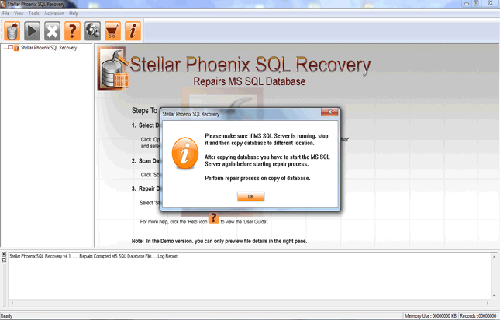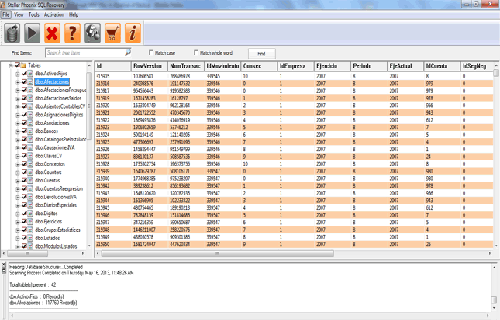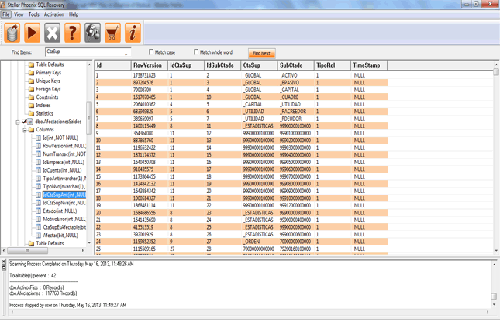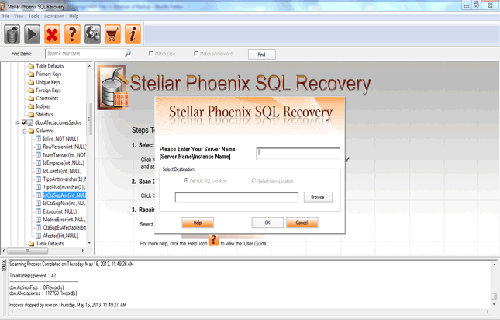SQL Server Error Message!File Repair Tool Blog
The events and error message center which is located at Microsoft Website is the primary source of information on error messages for SQL server and it also improves the customer experience at the time of searching for information on SQL server error messages and also in other Microsoft products. Message number basically identifies each error messages and the error message text describes the issue. This text messages error frequently includes placeholders for information that is to be inserted in the error messages when it is displayed.
The error message text does not tell you how to solve or work around the problem. In the series of error messages list, you will get the ways on how to overcome or work around certain error messages. There are some error messages which are self explanatory and can be repaired very easily like “Invalid object name”. Some other is not easy to repair or work around and this type of problem is faced by those who are new to the SQL server. Therefore it becomes the aim of this page and the succeeding pages to instruct you in addressing or working around SQL server error messages.
 |
Mentioned below is the list of some of the error messages of SQL server:
Error 21: Warning: Warning: Fatal error %d occurred at %S_DATE. Note the error and time, and contact your system administrator.
Error 53: An error has occurred while establishing a connection to the server. When connecting to SQL Server, this failure may be caused by the fact that under the default settings SQL Server does not allow remote connections. (provider: Named Pipes Provider, error: 40 – Could not open a connection to SQL Server ) (.Net SqlClient Data Provider).
Error 101: Query not allowed in Waitfor
Error 102: Incorrect syntax near ‘%.*ls’.
Error 103: The %S_MSG that starts with ‘%.*ls’ is too long. Maximum length is %d.
Error 104:ORDER BY items must appear in the select list if the statement contains a UNION operator.
Error 105: Unclosed quotation mark before the character string ‘%.*ls’.
Error 106: Too many table names in the query. The maximum allowable is %d.
Error 107:The column prefix ‘%.*ls’ does not match with a table name or alias name used in the query.
Error 108:The ORDER BY position number is out of range of the number of items in the select list.
Error 109:There are more columns in the INSERT statement than values specified in the VALUES clause. The number of values in the VALUES clause must match the number of columns specified in the INSERT statement.
Error 110:There are fewer columns in the INSERT statement than values specified in the VALUES clause. The number of values in the VALUES clause must match the number of columns specified in the INSERT statement.
Error 251: Could not allocate ancillary table for query optimization. Maximum number of tables in a query (%d) exceeded.
Error 252: Recursive common table expression ‘’ does not contain a top-level UNION ALL operator.
Error 253: Recursive member of a common table expression ‘’ has multiple recursive references.
Error 254: Prefixed columns are not allowed in the column list of a PIVOT operator.
Error 255: Pseudocolumns are not allowed in the column list of a PIVOT operator.
Error 256: : The data type int is invalid for the substring function. Allowed types are: char/varchar, nchar/nvarchar, and binary/varbinary.
Error 257: Implicit conversion from data type %ls to %ls is not allowed. Use the CONVERT function to run this query
Error 258: Cannot call methods on %ls.
Error 259: Ad hoc updates to system catalogs are not enabled. The system administrator must reconfigure SQL Server to allow this.
Error 260: Disallowed implicit conversion from data type %ls to data type %ls, table ‘%.*ls’, column ‘%.*ls’. Use the CONVERT function to run this query.
Err0r 360: The target column list of an INSERT, UPDATE, or MERGE statement cannot contain both a sparse column and the column set that contains the sparse column. Rewrite the statement to include either the sparse column or the column set, but not both.
Error 361: The number of target columns that are specified in an INSERT, UPDATE, or MERGE statement exceeds the maximum of %d. This total number includes identity, timestamp, and columns that have default values. To correct this error, change the query to target a sparse column set instead of single sparse columns.
Error 362: The query processor could not produce a query plan because the name ‘%.*ls’ in the FORCESEEK hint on table or view ‘’ did not match the key column names of the index ‘’.
Error 363: The query processor could not produce a query plan because the FORCESEEK hint on table or view ‘’ cannot be used with the %S_MSG specified by index ‘%.*ls’.
Error 364: The query processor could not produce a query plan because the FORCESEEK hint on view ‘’ is used without a NOEXPAND hint. Resubmit the query with the NOEXPAND hint or remove the FORCESEEK hint on the view.
Error 365: The query processor could not produce a query plan because the FORCESEEK hint on table or view ‘’ specified more seek columns than the number of key columns in index ‘%.*ls’.
Error 366: The query processor could not produce a query plan because the FORCESEEK hint on table or view ‘’ cannot be used with the column store index ‘%.*ls’.
Error 401: Unimplemented statement or expression %ls.
Error 402: The data types %s and %s are incompatible in the %s operator.
Error 403:Invalid operator for data type. Operator equals add, type equals text.
Error 404: The column reference “inserted.%.*ls” is not allowed because it refers to a base table that is not being modified in this statement.
Error 405: A remote table cannot be used as a DML target in a statement which includes an OUTPUT clause or a nested DML statement.
Error 406: %ls cannot be used in the PIVOT operator because it is not invariant to NULLs.
Error 407: Internal error. The string routine in file %hs, line %d failed with HRESULT 0x%x.
Error 408: A constant expression was encountered in the ORDER BY list, position %i.
Error 409: The %ls operation cannot take a %ls data type as an argument.
Error 410: COMPUTE clause #%d ‘BY’ expression #%d is not in the order by list.
Steps to fix SQL Server Error Messages
Step 1: Fisrt download, install and launch the MS SQL file repair tool. Stop the running MS SQL server. Perform the repair task on the copy of the corrupt database, click on the ‘OK’ button to continue.

Step 2: Click on the ‘Select database’ button and select the path of corrupt MDF file. You can also search your corrupt database file by using ‘Look in’ and ‘File Type’ button. click on the ‘Scan file‘ button to start the repairing process.
Step 3: The recoverable objects of database are listed in a tree view on the left side of the window. You can see the preview by clicking on the object.

Step 4: You can also search for a particular object by using ‘Find item’ option. Write the object name or a part of the object name in the given text box, check on ‘Match case‘ or ‘Match whole word‘ and then click find next button.

Step 5: Click on the ‘Start Repair’ icon. A dialog box will appear fill the SQL server instance name. To save the repaired file in the desired location click on the brows button and give the path, else the repaired file will be saved in the ‘Default SQL Location’. Click on the ‘OK’ button.

